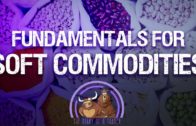What is Soft Commodity Trading & How to Trade Agricultural Commodities
Learn more about agricultural commodities trading or Soft Commodity Trading. Watch our latest video to learn how to Trade Agricultural Commodities and get profitable trading results!
Agricultural commodities trading : Learn How To Trade
Without a doubt, the United States Department of Agriculture is the largest provider of fundamental information when it comes to the soft commodity such as wheat, corn, and agricultural products in general. For example, traders will look to the USDA for hints and ideas as to where the future trend of crops may be going. Obviously, this is a supply and demand question, as if there is serious damage to the wheat crop or example, this should raise prices in the markets as there won’t be as much supply. Obviously, they can work both ways, as a larger than expected crop typically will bring down the value of a commodity.
The easiest place to find this fundamental information is www.USDA.gov which is the official website. There are several different markets that they give information on, and if you are looking for potential fundamental factors as to pricing in an agricultural market, it’s likely that you will find the information you need here.
Not only do they give you reports on what has or has not been produced, but also provides trend forecasting information. For example, the will say such things as “the overall trend for soybeans is a strong crop for the rest of the year.” This obviously would be negative for soybean pricing, as there would be more than enough to fill demand.
By keeping an eye on supply and demand trading, you should be able to discern what the longer-term trend will be for various markets that you are trading. This is true in all financial markets, but in agricultural markets we have the USDA to tell us what weather has been going to the crops, livestock, or other markets.



 Difference Between Hammer and Hanging Man 2023 [ Must Watch for Trader ]
Difference Between Hammer and Hanging Man 2023 [ Must Watch for Trader ]